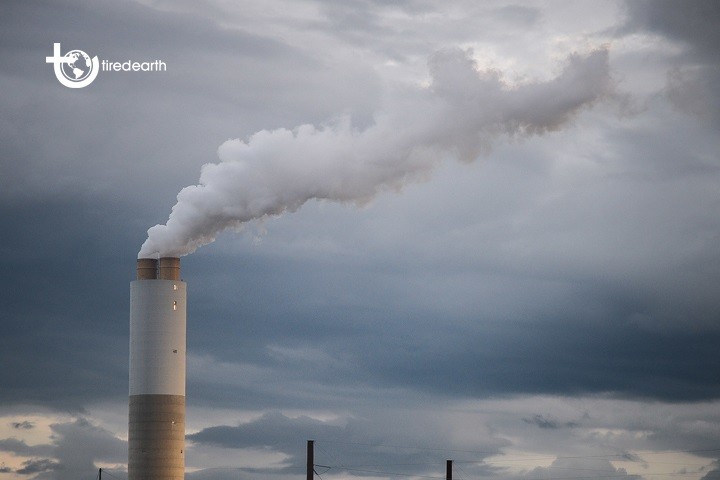In COP27? Let us reflect on the causes of climate change

The 2022 United Nations Climate Change Conference, referred to as the Conference of the Parties of the UNFCCC (COP27), was ongoing until 18 November 2022 in Sharm El Sheikh, Egypt.
In the second week of proceedings, the global temperature issue of 1.5C has been compromised and the next would be 2C. It will worsen the climate crisis.
By the way, have you thought about the causes of climate change?
The Earth’s Energy Budget
In global warming, the Greenhouse Effect is key. Increasing greenhouse gases are warming the Planet Earth. Let us see how it happens.
The Sun is the primary energy source of the planet Earth. The planet is surrounded by air, which we call the atmosphere.
The incoming solar rays, called solar radiation, reach the surface of the Earth. On passing through the atmosphere, around half of it is reflected towards space due to clouds, dust, or other particles.
Solar energy is absorbed by the Earth’s surface, trees, buildings and so on. Some highly reflective surfaces, such as ice or snow, reflect the majority to space while absorbing a low percentage of solar energy.
The story is not yet over. The planet’s surface, trees, buildings, and everything else now radiate the energy as heat back to space. The warmer the object, the higher the heat energy it emits.
In going back to space through the atmosphere, the outgoing heat energy is absorbed by clouds and greenhouse gases – or heat-trapping gases – in the lower atmosphere, preventing it from leaving the Earth system. Only a small amount of heat energy leaves the Earth towards space.
In nutshell, solar energy travels to the Earth easily and is absorbed by Earth’s surface and other objects. Then they radiate heat energy, which is absorbed by the greenhouse gases, preventing it from leaving the Earth.
The Greenhouse Effect
The greenhouse gases absorbing energy as heat is called the Greenhouse Effect. It mirrors the plants grown inside a greenhouse in winter.
Turning to the atmosphere of Earth (or air), the major constituents are:
- Nitrogen (78.08%)
- Oxygen (20.95%)
- Argon (0.93%)
- Carbon dioxide (0.04%)
Carbon dioxide with only 0.04% of the atmosphere can cause alarmingly high levels of global warming is hard to believe.
When considering the greenhouse gases, the percentages are as follows:
- Carbon dioxide or CO2 (82%)
- Methane or CH4 (10%)
- Nitrous oxide or N2O (6%)
- Chlorofluorocarbons (CFCs), including Ozone, O3 (3%)
The amount of heat energy that the greenhouse gases can absorb and re-radiate differs. For example, methane is 23 times more effective than CO2 while nitrous oxide is 296 times more effective than CO2. But when compared with CO2, these gases are less in the atmosphere.
When added to the atmosphere, CO2 hangs around between 300 to 1000 years or more. Methane and nitrous oxide will stay in the air for 12 and 114 years, respectively.
Moreover, water vapour (H2O) is the most abundant greenhouse gas in the atmosphere but it is not portrayed, like CO2, as the main driver of climate change. Water vapour stays in the atmosphere for hours or days and then precipitates out as rain or snow. And water vapour is not human-made either. The natural process mainly takes care of it.
Is the Greenhouse Effect necessary or not?
The Greenhouse Effect is essential to maintain our planet at a suitable temperature for life. Without that, all solar radiation coming to the Earth will exit the planet, leaving the surface temperature of the Earth as low as -20C. So, greenhouse gases are necessary but, since the Industrial Revolution, the rising greenhouse gases are causing a climate crisis that humanity cannot handle at all costs.
The Keeling Curve marks the level of CO2 in the atmosphere against time. Up to 1958, ice core data marks the intensity of CO2.
With the start of the Industrial Revolution, the CO2 level was constant but, since the 1800s, it gradually increased. In 1958, CO2 was 317 ppm (parts per million). On 7 November 2022, it is 416.41 ppm. In 64 years, CO2 intensity rose by nearly 100 ppm.
So, greenhouse gases are necessary but the rise of the level of CO2 and other greenhouse gases is too much to cope with. And the intensity of these gases is increasing.
The role of the Sun
The Sun is the primary source of energy for the Earth. A metric called Total Solar Irradiance (TSI) is used to measure the energy that is received from the Sun. An 11-year solar cycle as well as solar flares and storms from the surface of the Sun is incorporated in the metric TSI.
In the past, solar variability has played the role in the climate change of Earth. For example, reduced solar activity coupled with increased volcanic commotion resulted in the Little Ice Age.
Since 1750, the average amount of solar energy that the Earth received remained constant but, since 1950, the global temperature is noticeably on the rise. So, solar activity is not the cause.
Suppose the Sun warms the surface of the Earth and its objects and the entire atmosphere – the lower and upper. The temperature of the surface of the Earth and the lower atmosphere has increased but that of the upper atmosphere has decreased. It shows that the Greenhouse Effect is responsible for such warming.
The Sun is therefore not the cause of the ongoing climate crisis but the activities of human beings should change to keep the 1.5C global temperature level alive, not 2C.
More…
What is climate change?
https://climate.nasa.gov/
The Keeling Curve
https://keelingcurve.ucsd.edu/
What Is the Greenhouse Effect?
https://www.livescience.com/37743-greenhouse-effect.html#:~:text=The%20exchange%20of%20incoming%20and,plants%20and%20hard%20surfaces%20inside.
The greenhouse effect
https://www.bgs.ac.uk/discovering-geology/climate-change/how-does-the-greenhouse-effect-work/#:~:text=%27Greenhouse%20gases%27%20are%20crucial%20to,of%20about%20%2D20%C2%B0C.
WHAT ABOUT WATER VAPOUR?
https://climatechangeconnection.org/science/what-about-water-vapour/
The Earth's Radiation Budget
https://science.nasa.gov/ems/13_radiationbudget
Earth’s Energy Budget: A Story
https://ceres.larc.nasa.gov/images/Earth_Energy_Budget_StoryBoard_Slides.pdf
WHAT CAUSES CLIMATE CHANGE?
https://climatechangeconnection.org/science/climate_causes/
The Atmosphere: Getting a Handle on Carbon Dioxide
https://climate.nasa.gov/news/2915/the-atmosphere-getting-a-handle-on-carbon-dioxide/
How long do greenhouse gases stay in the air?
https://www.theguardian.com/environment/2012/jan/16/greenhouse-gases-remain-air
Basics of Climate Change
https://www.epa.gov/climatechange-science/basics-climate-change
Water vapor, carbon dioxide, methane and ozone are the most effective greenhouse gases.

